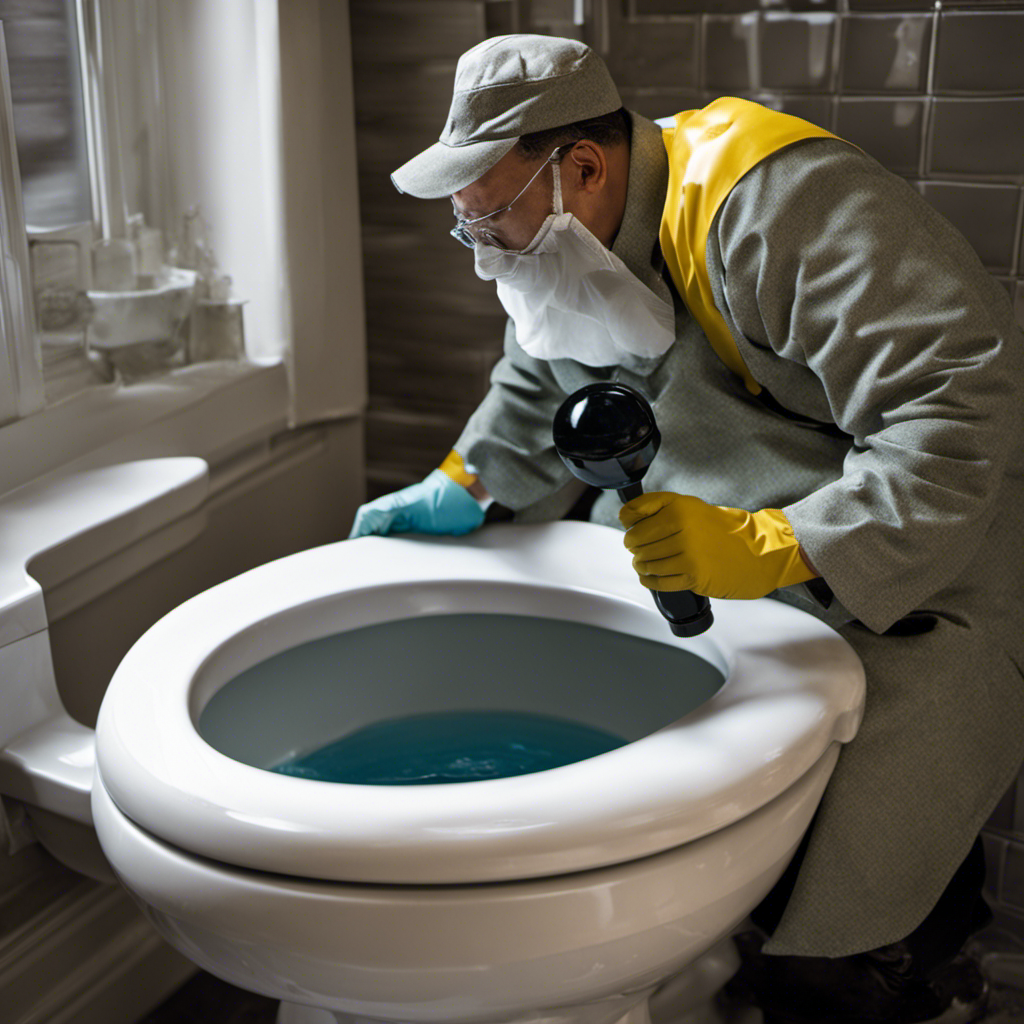Is it possible for using common household items to unclog a toilet to result in damage to the plumbing system?
When faced with a frustrating clog in the toilet, fear not, for we are here to help!
In this step-by-step guide, we will show you how to expertly remove something stuck in your toilet.
From assessing the situation to utilizing the right tools like a plunger or toilet auger, we’ve got you covered.

And if all else fails, we’ll even provide tips on when it’s time to call a professional plumber.
Let’s dive in and master the art of toilet troubleshooting!
Key Takeaways
- Check the water level and look for visible blockages in the toilet bowl
- Use a plunger specifically designed for toilets and create a good seal
- Consider using a toilet auger or alternative methods like a wire coat hanger or drain snake
- If all else fails, call a professional plumber, especially for recurrent or complex clogs
Assess the Situation
To begin with, we need to carefully assess the situation by checking the water level and ensuring the toilet isn’t overflowing. Identifying possible causes is crucial in determining the best course of action.
First, check if the water level is normal. If it’s too high, there may be a clog in the drain pipe.
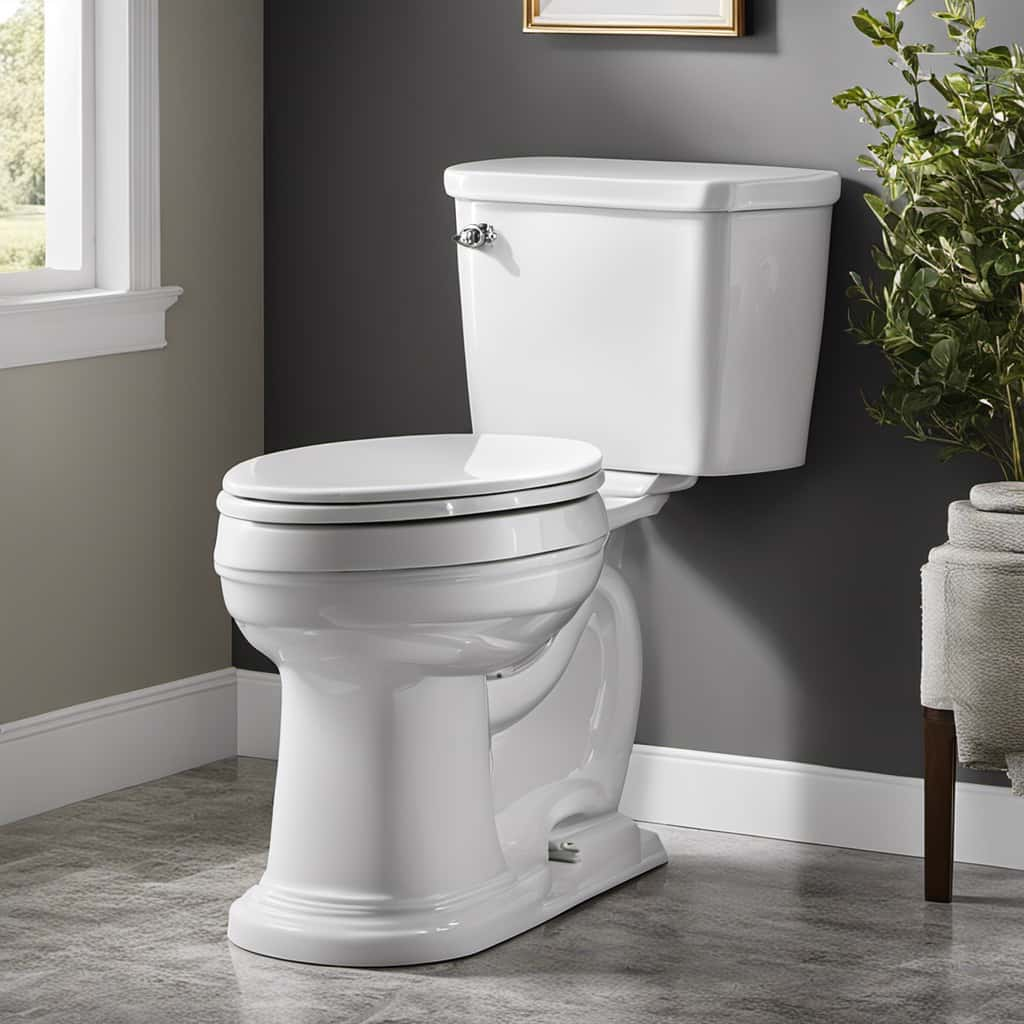
Next, inspect the toilet bowl for any visible blockages. It’s important to take safety precautions during this process. Wear gloves to protect yourself from any potential contaminants. Avoid using excessive force or sharp objects that may damage the toilet.
If the cause of the blockage isn’t apparent, it’s recommended to call a professional plumber for further assistance.
Gather Necessary Tools
We will gather the necessary tools to address a stuck toilet. Having the right tools is crucial for any toilet repair or DIY plumbing project. Here are the essential tools you’ll need:
- Plunger: A plunger is the first tool you should reach for when dealing with a stuck toilet. It creates suction and helps dislodge the blockage.
- Toilet auger: If the plunger doesn’t work, a toilet auger can be used to reach and remove the obstruction. It has a long, flexible cable with a corkscrew-like end.
- Rubber gloves: It’s important to protect your hands from any waste or bacteria. Rubber gloves will keep you safe and hygienic during the process.
- Bucket: Keep a bucket nearby to collect any excess water or debris that might come out of the toilet during the repair.
Use a Plunger
After gathering the necessary tools, let’s dive into using the plunger to address the stuck toilet.

The plunger is a tried and tested tool for unclogging toilets, but if you don’t have one on hand, there are some plunger alternatives and DIY toilet unclogging methods you can try. However, keep in mind that these alternatives may not be as effective as using a plunger.
To use a plunger, start by placing the rubber cup over the drain hole in the toilet bowl. Ensure a good seal by pressing down firmly. Next, push and pull the plunger in a quick and forceful motion to create suction and dislodge the clog. Repeat this process several times if necessary.
Remember to use a plunger specifically designed for toilets, as they’ve a larger cup and a flange that helps create a better seal.
Try a Toilet Auger
To unclog a stuck toilet, we can try using a toilet auger. A toilet auger, also known as a closet auger, is a tool specifically designed to clear blockages in toilets. Here’s how to use a toilet auger effectively:
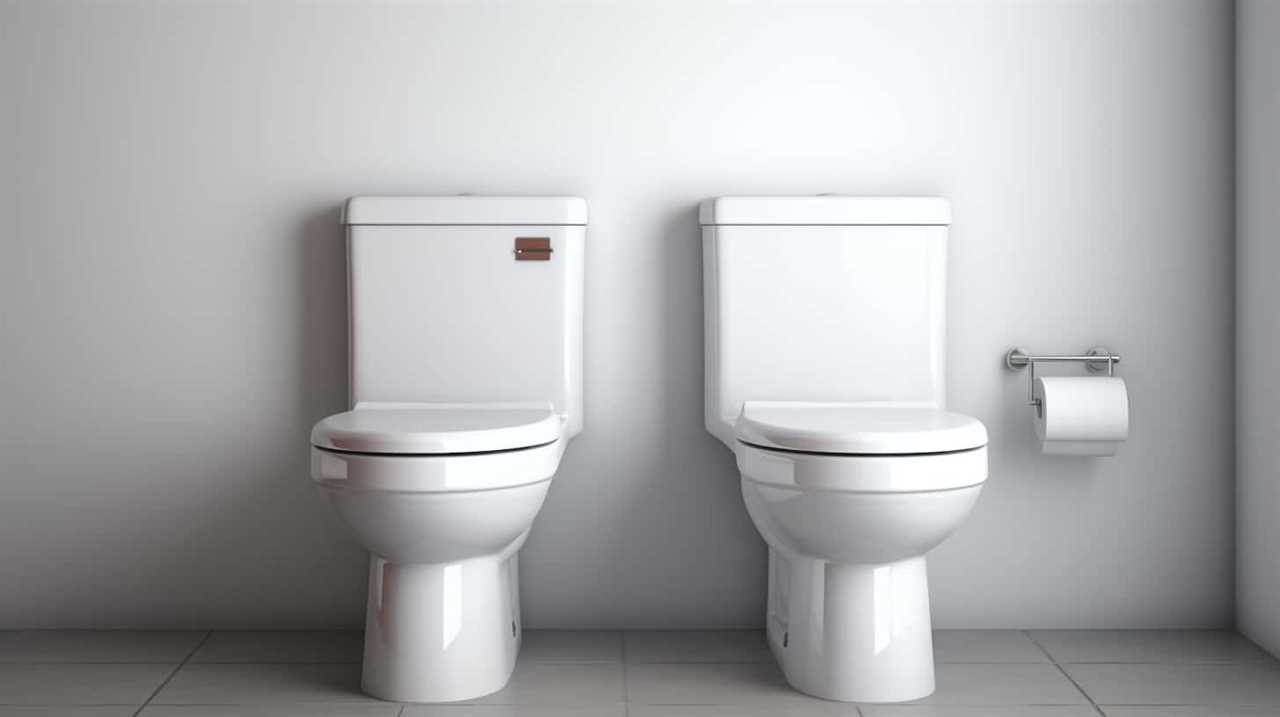
- Start by inserting the end of the auger into the toilet bowl, making sure it goes in smoothly.
- Rotate the handle clockwise while applying gentle pressure. This will help the auger navigate through the pipe and break up the blockage.
- Continue rotating the handle until you feel the auger make contact with the obstruction.
- Once you’ve reached the blockage, give the auger a few more rotations to break it up and free the clog.
If you don’t have a toilet auger at hand, there are alternatives you can try, such as using a wire coat hanger or a drain snake.
Common causes of toilet blockages include excessive toilet paper, foreign objects, or a buildup of waste and debris.
Call a Professional Plumber if All Else Fails
If all else fails, when should a professional plumber be called to unclog a stuck toilet?
While attempting to unclog a toilet using DIY techniques is often effective, there are instances where calling a professional plumber becomes necessary. This is especially true when all the previous methods have been exhausted and the toilet remains stubbornly clogged.
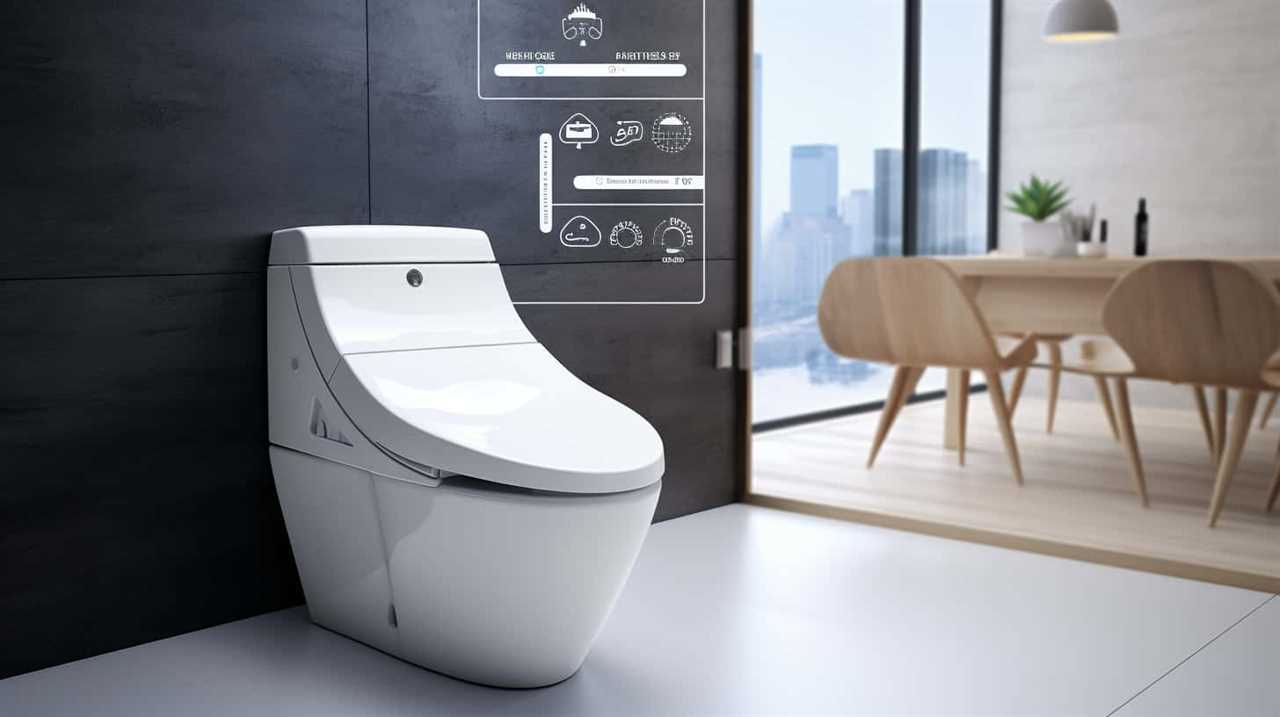
A professional plumber has the expertise and specialized tools to diagnose and solve complex clogs that may be caused by more serious issues. Additionally, if the clog is recurrent or if there are multiple toilets in the house experiencing similar problems, it may indicate a larger plumbing problem that requires professional attention.
Frequently Asked Questions
How Do I Prevent a Toilet From Getting Stuck in the First Place?
To prevent a toilet from getting stuck, we can take preventive measures. By understanding common toilet clog causes, we can avoid flushing excessive toilet paper, non-flushable items, and using too much water.
Can I Use Any Household Items as an Alternative to a Plunger?
Using household items as an alternative to a plunger can be effective in unclogging a toilet. However, there are risks involved, such as causing damage to the plumbing system. It’s important to proceed with caution and follow proper techniques.
What Should I Do if the Water Level in the Toilet Bowl Is Too High?
To lower the water level in a toilet bowl, follow these steps. First, locate the shut-off valve behind the toilet and turn it clockwise to stop the water flow. This will prevent the water level from rising further.
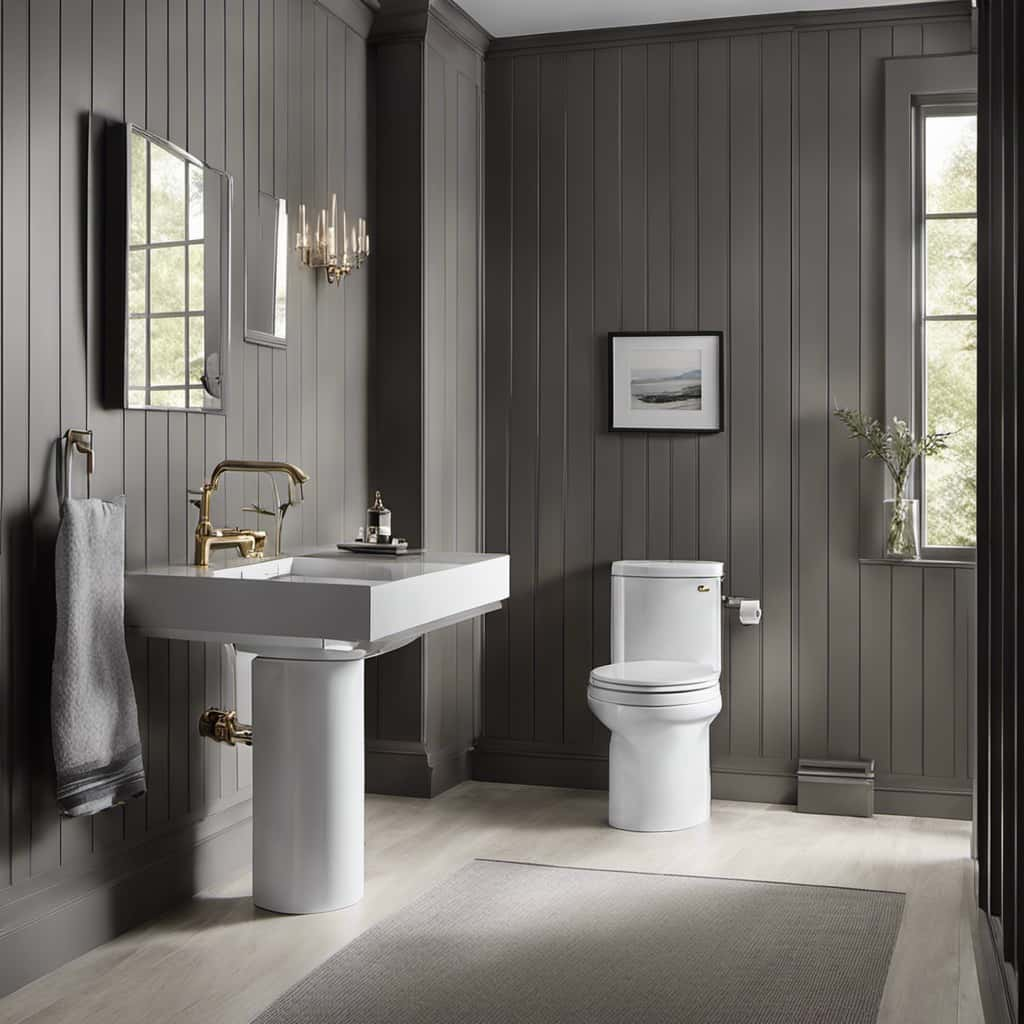
Is It Safe to Use Chemical Drain Cleaners to Unclog a Toilet?
Using a snake as a toilet unclogging tool has pros and cons. Regular toilet maintenance is important in avoiding clogs. Chemical drain cleaners can be effective, but may damage pipes and harm the environment.
What Are Some Signs That Indicate a More Serious Plumbing Issue That Requires Professional Assistance?
Warning signs that indicate a serious plumbing issue include water leaks, slow drainage, foul odors, and low water pressure. Common causes include clogged pipes, tree root intrusion, and corroded pipes. Professional assistance is required for proper diagnosis and repair.
Conclusion
In conclusion, dealing with a stuck toilet can be a frustrating situation. However, with the right tools and techniques, you can resolve the issue smoothly.
Just like a skilled mechanic fixing a car engine, you can tackle the problem confidently and efficiently.

Remember to assess the situation, gather the necessary tools, use a plunger or toilet auger, and if all else fails, call a professional plumber for assistance.
Don’t let a stuck toilet be a thorn in your side, fix it like a pro!





